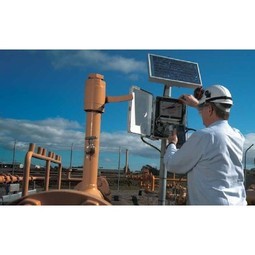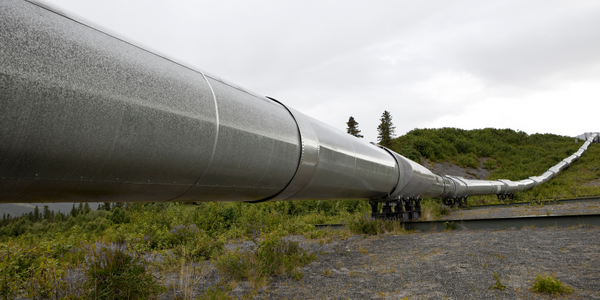Customer Company Size
Large Corporate
Region
- Europe
Country
- Russia
Product
- ICONICS GENESIS64™ HMI/SCADA
- Hyper Historian™ data historian
- BizViz™ manufacturing intelligence
- PortalWorX™ real-time collaboration and visualization dashboard
- ReportWorX™ enterprise reporting, charting and analysis
Tech Stack
- Microsoft SharePoint®
- MathWorks MatLab® simulation programs
Implementation Scale
- Enterprise-wide Deployment
Impact Metrics
- Productivity Improvements
- Cost Savings
- Digital Expertise
Technology Category
- Platform as a Service (PaaS) - Data Management Platforms
- Platform as a Service (PaaS) - Connectivity Platforms
Applicable Industries
- Utilities
- Oil & Gas
Applicable Functions
- Discrete Manufacturing
- Maintenance
Use Cases
- Predictive Maintenance
- Process Control & Optimization
- Real-Time Location System (RTLS)
Services
- System Integration
- Software Design & Engineering Services
About The Customer
A recent customer of ICONICS is a large energy generation firm comprised of a network of plants located throughout Central Russia. The largest of the sites is a 2500MW facility that is fueled by a combination of natural gas and fuel oil and consists of four thermal power plants. This location has now been optimized via ICONICS technology. The Russian energy firm, working with system integrator, RVS, selected ICONICS GENESIS64™ HMI/SCADA, Hyper Historian™ data historian and BizViz™ manufacturing intelligence (including PortalWorX™ real-time collaboration and visualization dashboard and ReportWorX™ enterprise reporting, charting and analysis) software.
The Challenge
The large-scale Russian energy provider has had basic direct digital control (DDC) for many years. Working with its system integrator, RVS, the firm initiated a major optimization effort, with a preference towards utilizing the latest software technology while simultaneously ensuring integration with a wide variety of data sources. The firm sought a solution that could handle the data from four thermal power plant (TPP) production branches (each with approximately 5,000 I/O points) as well as from its executive office. An additional major need of the plant was to provide a uniform, insightful user interface to all operations and levels of management. The company required dashboards that could provide needed insight in order to drive immediate improvement actions. The site also sought a major upgrade in its reporting capabilities. Prior to considering this upgrade, a legacy data historian from OSI PI provided limited visualization and report capability, but could not provide the depth of information available.
The Solution
Since ICONICS GENESIS64 was selected as its preferred automation software platform, the plant has been able to integrate real-time plant data, legacy historical data, newly recorded data (utilizing ICONICS’ powerful Hyper Historian data historian), data from various business systems, and simulation and forecast data generated by MathWorks MatLab® simulation programs. The need for insightful, intuitive user interfaces was fulfilled via GENESIS64’s GraphWorX64™ and TrendWorX64™ components and PortalWorX™ realtime collaborative visualization tools, which helped to create powerful Microsoft SharePoint®-integrated operations dashboards. These solutions help to ensure the delivery of needed information to each role within the organization, supporting necessary decision-making in order to optimize operations. Also, the firm’s requirement for enhanced reporting has been accomplished by ReportWorX, which delivers operational reports as well as plant revenue and profit reports.
Operational Impact

Case Study missing?
Start adding your own!
Register with your work email and create a new case study profile for your business.
Related Case Studies.

Case Study
Taking Oil and Gas Exploration to the Next Level
DownUnder GeoSolutions (DUG) wanted to increase computing performance by 5 to 10 times to improve seismic processing. The solution must build on current architecture software investments without sacrificing existing software and scale computing without scaling IT infrastructure costs.

Case Study
IoT Solutions for Smart City | Internet of Things Case Study
There were several challenges faced: It is challenging to build an appliance that can withstand a wide range of voltage fluctuations from as low at 90v to as high as 320v. Since the device would be installed in remote locations, its resilience was of paramount importance. The device would have to deal with poor network coverage and have the ability to store and re-transmit data if networks were not available, which is often the case in rural India. The device could store up to 30 days of data.

Case Study
Automation of the Oguz-Gabala-Baku water pipeline, Azerbaijan
The Oguz-Gabala-Baku water pipeline project dates back to plans from the 1970’s. Baku’s growth was historically driven by the booming oil industry and required the import of drinking water from outside of the city. Before the construction of the pipeline, some 60 percent of the city’s households received water for only a few hours daily. After completion of the project, 75 percent of the two million Baku residents are now served around the clock with potable water, based on World Health Organization (WHO) standards. The 262-kilometer pipeline requires no pumping station, but uses the altitude differences between the Caucasian mountains and the capital to supply 432,000 m³/d to the Ceyranbatan water reservoir. To the people of Baku, the pipeline is “the most important project not only in 2010, but of the last 20 years.”

Case Study
GPRS Mobile Network for Smart Metering
Around the world, the electricity supply industry is turning to ‘smart’ meters to lower costs, reduce emissions and improve the management of customer supplies. Smart meters collect detailed consumption information and using this feedback consumers can better understand their energy usage which in turn enables them to modify their consumption to save money and help to cut carbon emissions. A smart meter can be defined in many ways, but generally includes an element of two-way communication between the household meter and the utility provider to efficiently collect detailed energy usage data. Some implementations include consumer feedback beyond the energy bill to include online web data, SMS text messages or an information display in consumers’ premises. Providing a cost-effective, reliable communications mechanism is one of the most challenging aspects of a smart meter implementation. In New Zealand, the utilities have embraced smart metering and designed cost effective ways for it to be implemented. The New Zealand government has encouraged such a move to smart metering by ensuring the energy legislation is consistent with the delivery of benefits to the consumer while allowing innovation in this area. On the ground, AMS is a leader in the deployment of smart metering and associated services. Several of New Zealand’s energy retailers were looking for smart metering services for their residential and small business customers which will eventually account for over 500,000 meters when the multi-year national deployment program is concluded. To respond to these requirements, AMS needed to put together a solution that included data communications between each meter and the central data collection point and the solution proposed by Vodafone satisfied that requirement.

Case Study
Remote Wellhead Monitoring
Each wellhead was equipped with various sensors and meters that needed to be monitored and controlled from a central HMI, often miles away from the assets in the field. Redundant solar and wind generators were installed at each wellhead to support the electrical needs of the pumpstations, temperature meters, cameras, and cellular modules. In addition to asset management and remote control capabilities, data logging for remote surveillance and alarm notifications was a key demand from the customer. Terra Ferma’s solution needed to be power efficient, reliable, and capable of supporting high-bandwidth data-feeds. They needed a multi-link cellular connection to a central server that sustained reliable and redundant monitoring and control of flow meters, temperature sensors, power supply, and event-logging; including video and image files. This open-standard network needed to interface with the existing SCADA and proprietary network management software.







